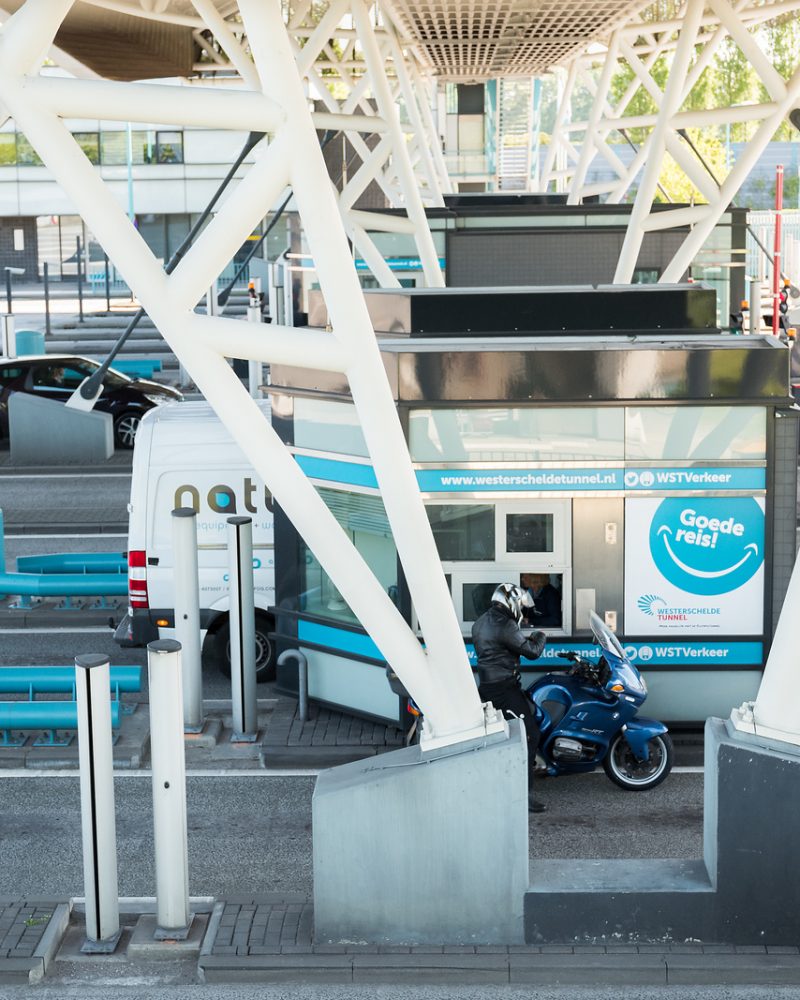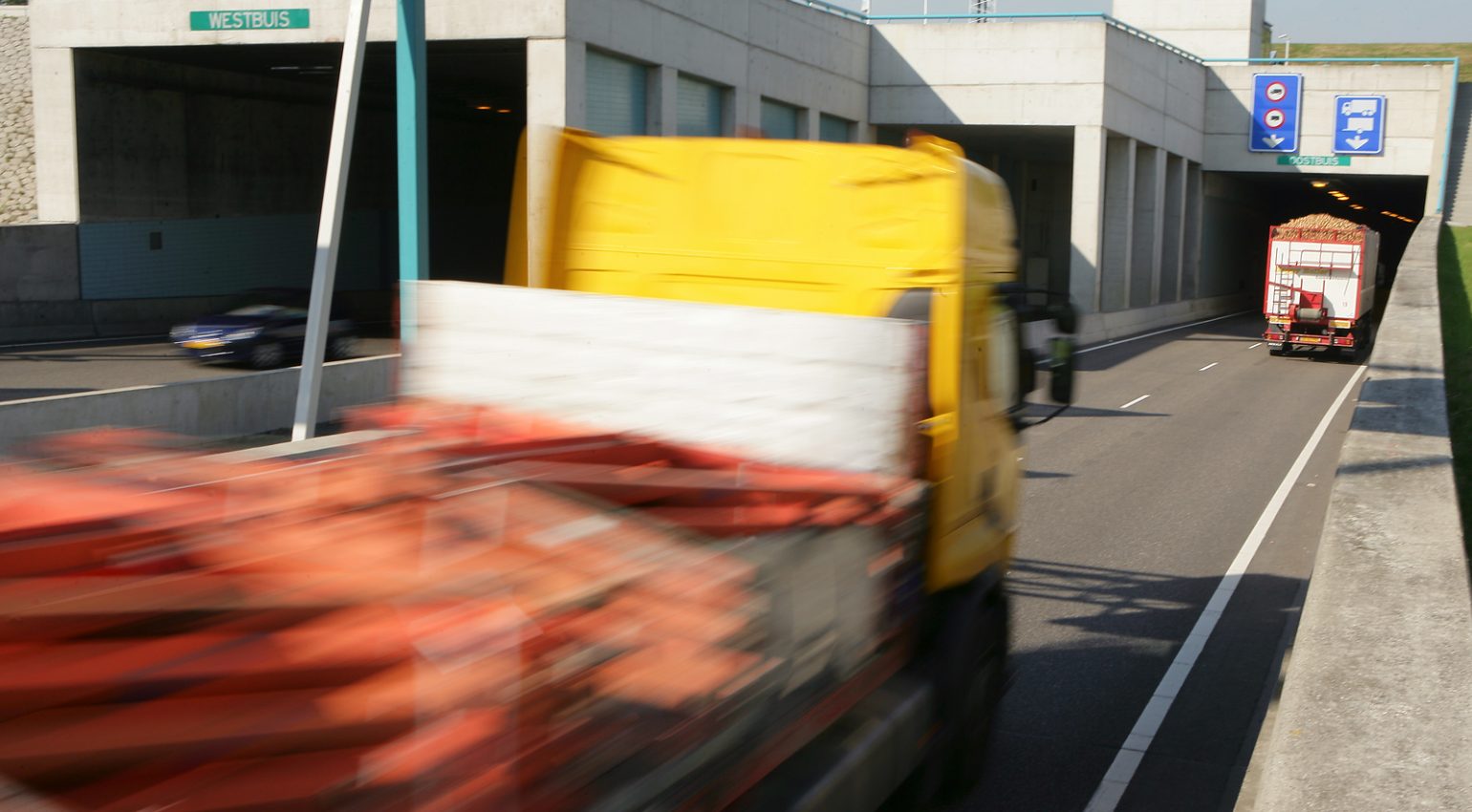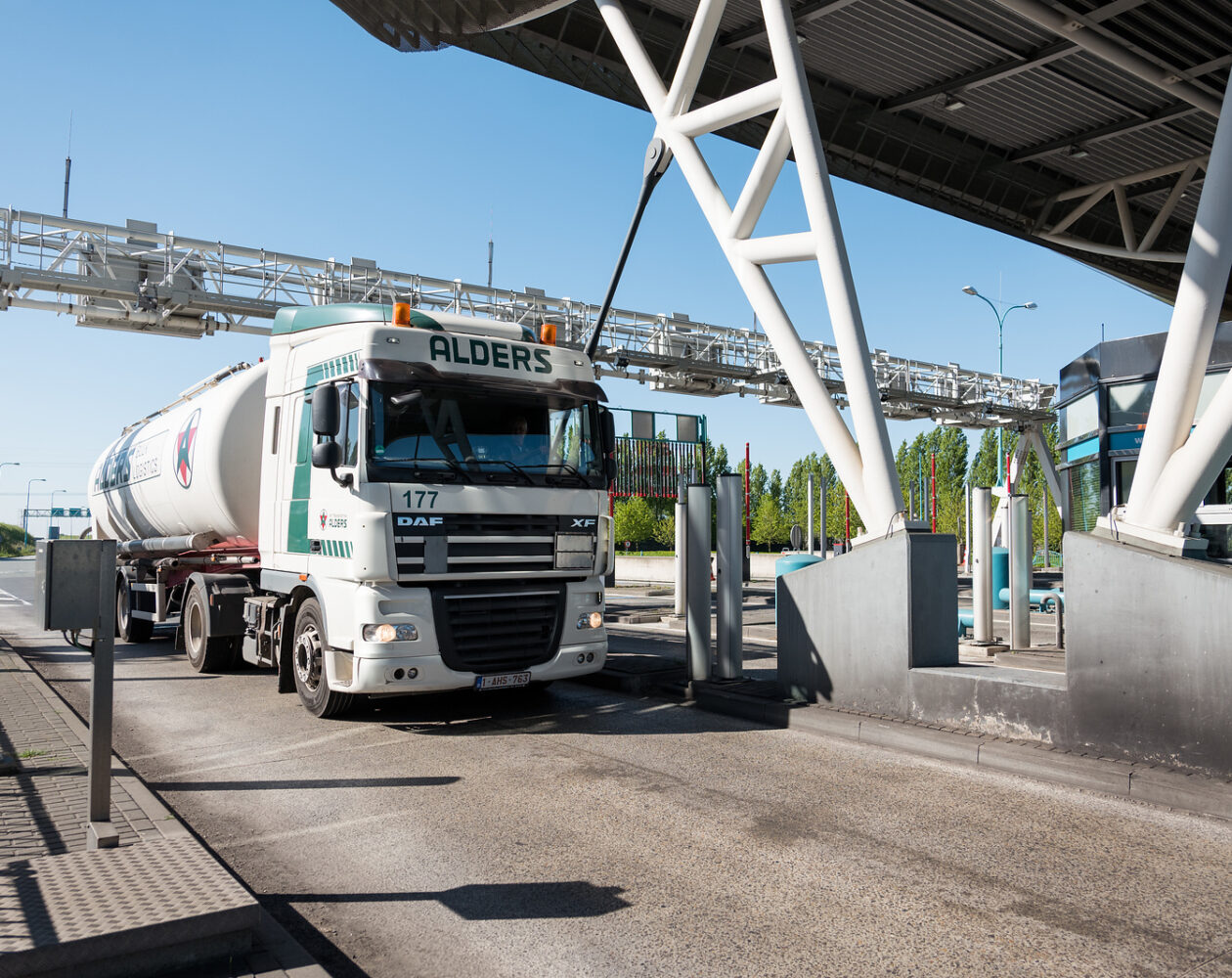
On the Toll Plaza
In both directions, transport traffic on the Toll Plaza takes Lane 7 (on the far right). This lane is wider than the other lanes and specifically intended for lorries. In Lane 7, you can pay with the t-tag or with your credit card, PIN card or fuel card. Please see below for the ways in which you can pay in the Toll Plaza. There is an intercom should you need assistance. Our Toll Plaza attendants are happy to help.
If you come from the direction Middelburg/Goes, you pay at the Toll Plaza first and then you drive on in the direction of the tunnel. If you come from the direction of Gent/Terneuzen you pass through the tunnel first and then you pass through the Toll Plaza to pay.
A quick and cheap passage
Do you pass through often? Then it is beneficial to apply for a t-tag with Movenience. If you pass through Lane 7 with a t-tag, the barrier will go up and the toll fare due will immediately be deducted from your account. Fast and easy. The use of the t-tag is free, which means you will only pay for your passage. More information is available on our rate page.
-
€ 25 Standard € 15 T-Tag € 12,50 Frequent user discountCat. 4Lorry traffic
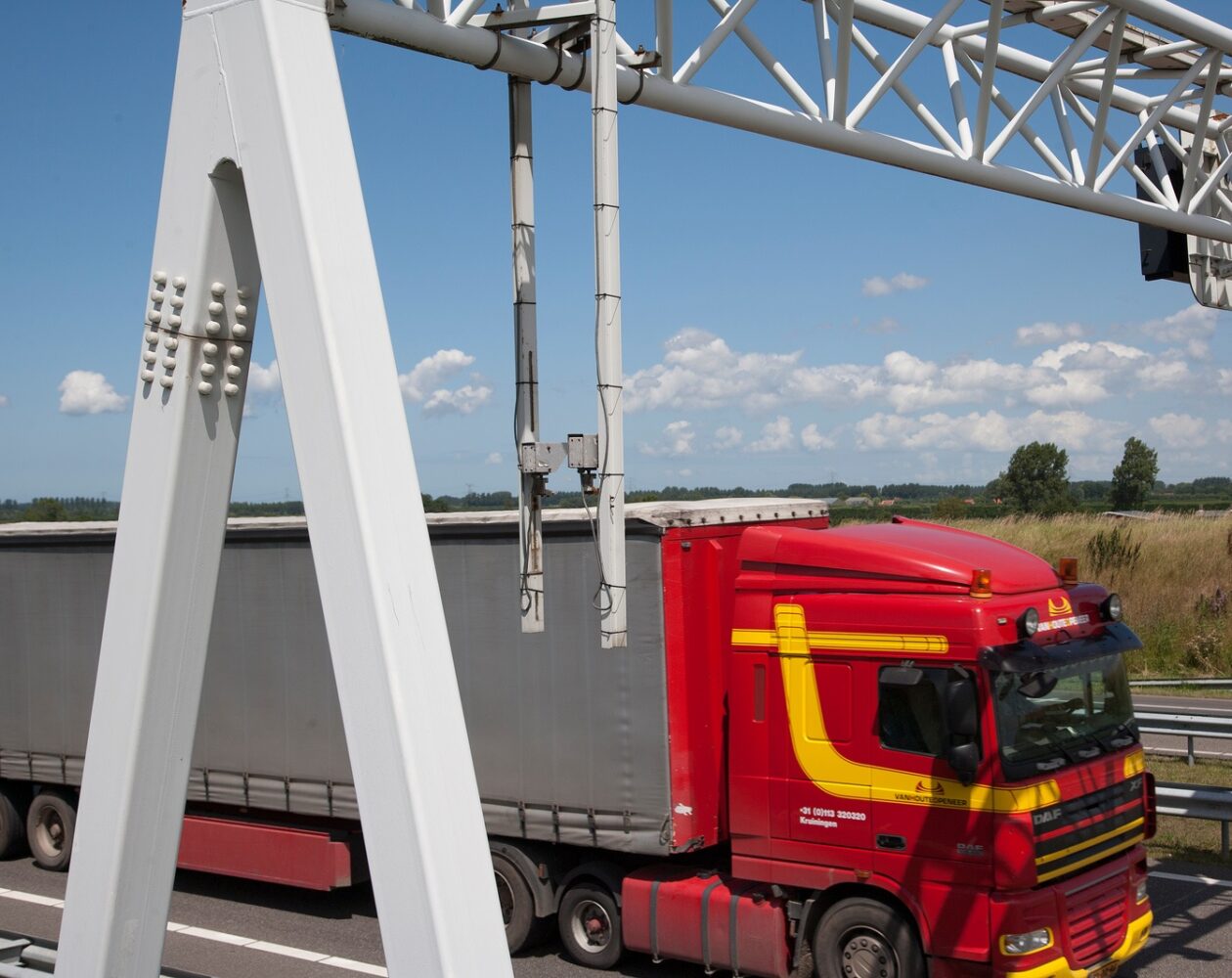
Height detection
Vehicles measuring more than 4.30 metres in height are not permitted to make use of our tunnels for the sake of the safety of passers-by and to prevent damage to the tunnel. Should a vehicle nevertheless prove to be too high, then an automated system becomes operative:
- the orange traffic lights flicker;
- the sign ‘vehicle too high’ is turned on;
- the notification ‘vehicle too high’ is passed on to the operator.
By means of signs and the broadcasting system the chauffeur is required to leave the route. The operator opens the barrier to a side road right before the tunnel. Both near the Westerscheldetunnel and near the Sluiskiltunnel there is a so-called calamity route. This road is usually only used by emergency services. If a vehicle that is too high must leave the route near the Westerscheldetunnel, driving via Antwerp is the only option left.
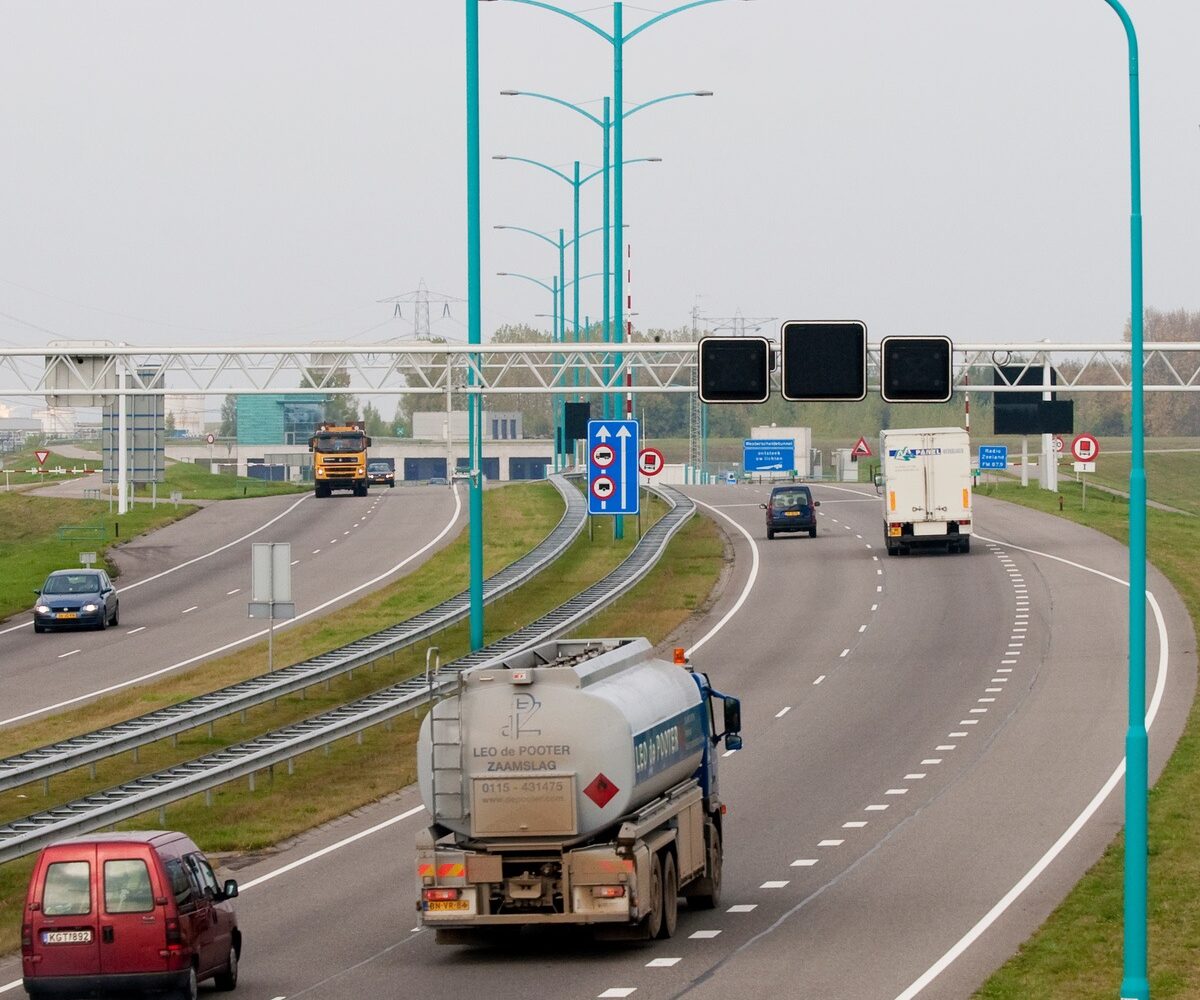
Special transport & applying for a permit
All of the lorry traffic that is wider than 3 metres and longer than 18 metres, or lorries that carry an excessively heavy load, must apply for a permit with the Rijksdienst voor het Wegverkeer (Netherlands Vehicle Authority) in order to be allowed to use the tunnel.
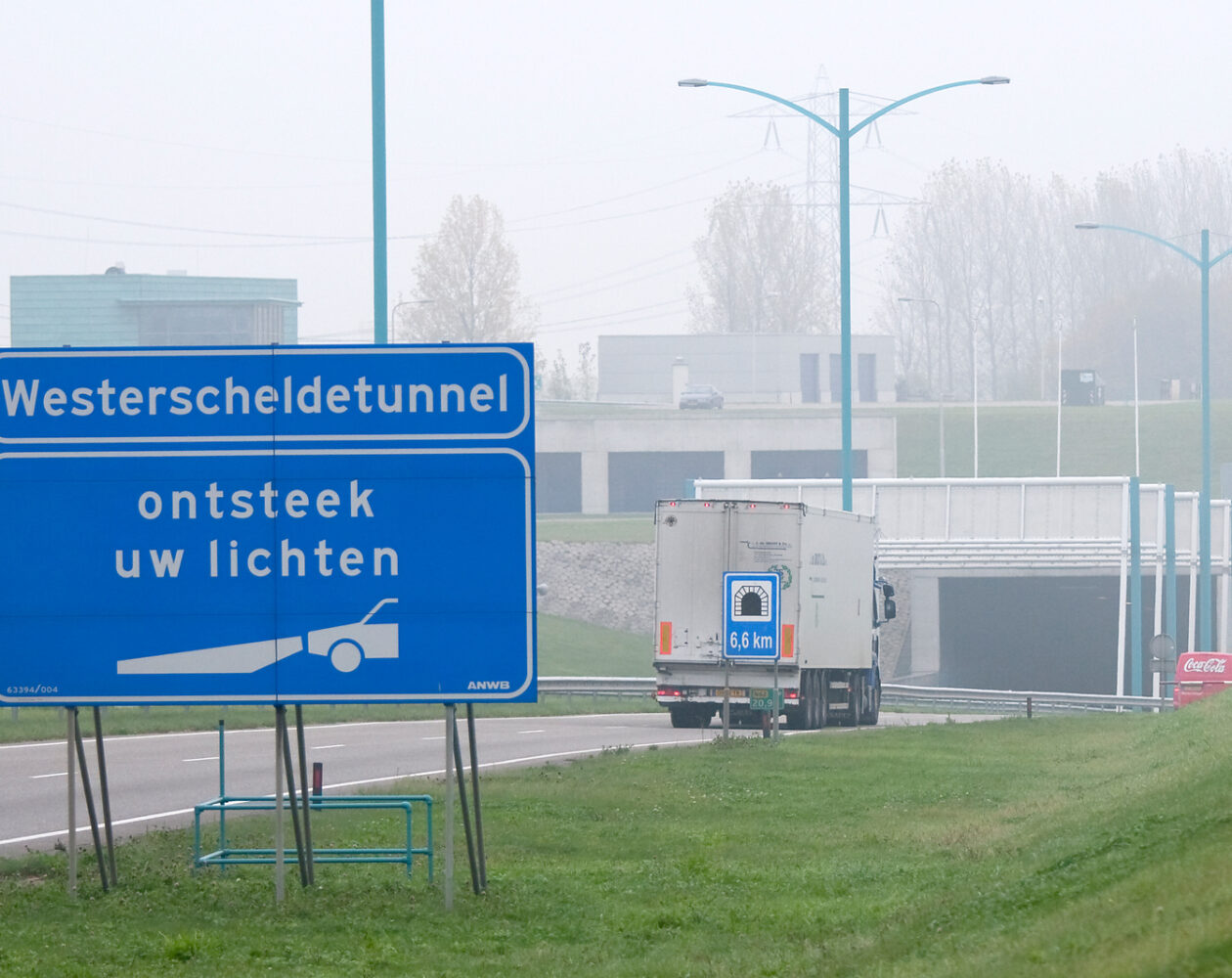
Hazardous substances
The Westerscheldetunnel and the Sluiskiltunnel are both Class C tunnels. This means that vehicles carrying hazardous goods that could cause a heavy or very heavy explosion or a significant release of toxic substances are prohibited from using these tunnels.
The carriage of hazardous substances is laid down in the Carriage of Dangerous Goods Act and in the Transport of Hazardous Substances by Road Regulation. Underlying these Acts is the European Agreement of International Carriage of Dangerous Goods by Road, the ADR. This agreement provides for a host of safety regulations.
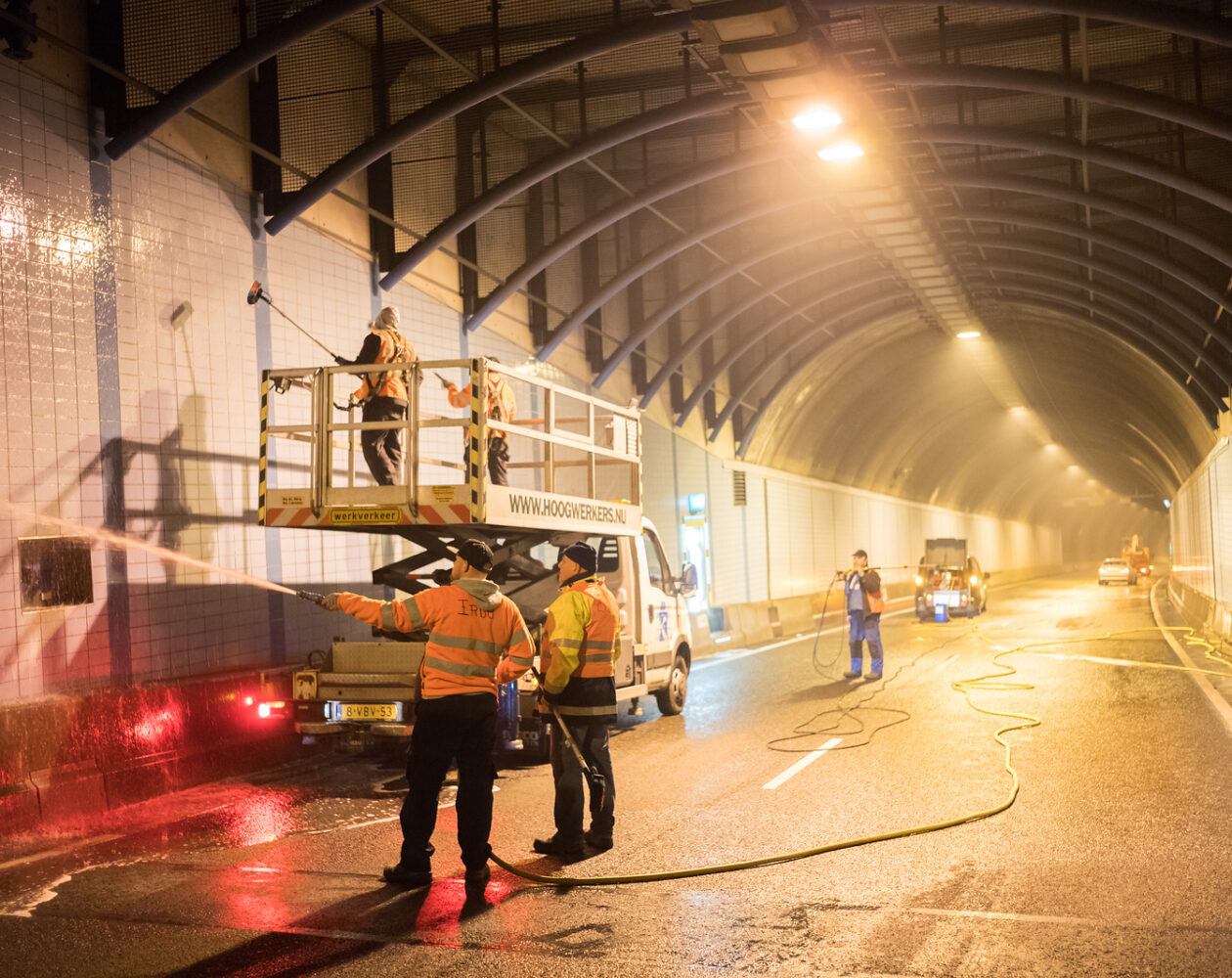
Passing through the tunnel during maintenance work
Once every two months, we do maintenance work on the Westerscheldetunnel. These works are always carried out on a Tuesday and Wednesday between 21.30 and 04.00 hrs. During this period, broad vehicle transport is not possible. The Sluiskil Tunnel is closed four times a year for maintenance purposes. Sometimes we need to schedule extra maintenance work. We always give ample notice whenever this is the case.
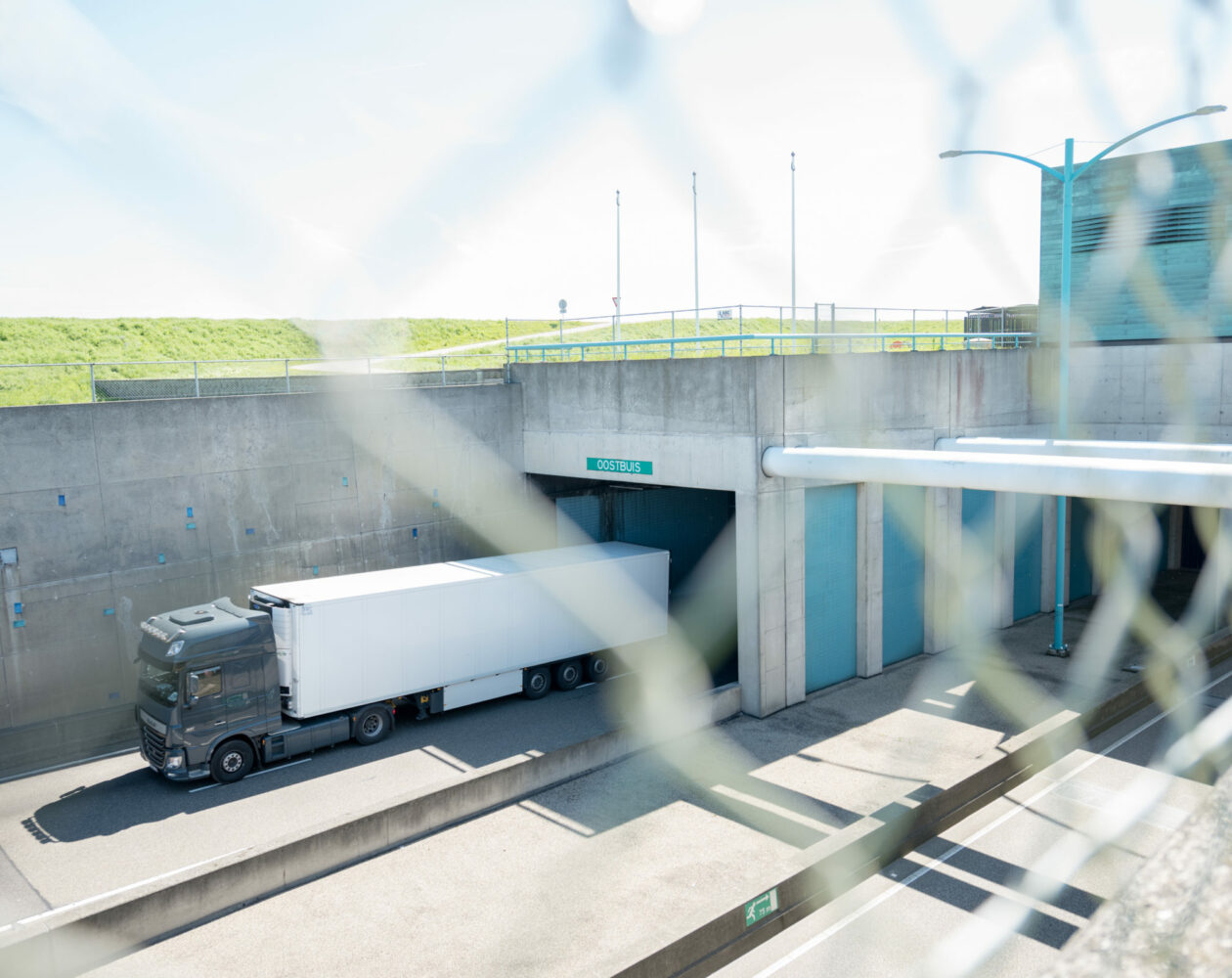
Overtaking prohibited in the tunnel
In order to guarantee the safety of all the road users, lorries are prohibited from overtaking other vehicles in both tunnels. This lowers the chance of unsafe situations. The enforcement of this ban is in the hands of the police and the judicial authorities.

